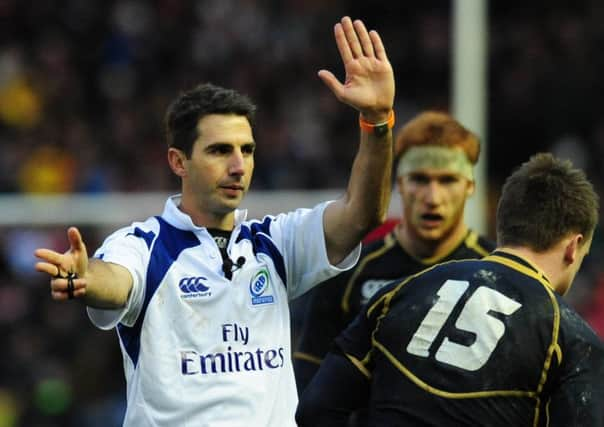Allan Massie: Referees are often biased but it's an unconscious bias


Referees have always been supposed to be free from bias, though that certainly wasn’t invariably the case in the old days. Most, I’m sure, try hard to referee according to the Laws without fear or favour. Nevertheless, as Edinburgh’s coach Richard Cockerill remarked this week, an unconscious bias favouring the supposedly superior side – and sometimes the home side – often operates. Crowds may have an influence, howls of outrage persuading the referee to consult the TMO.
Two incidents in Edinburgh’s match against Leinster in Dublin last weekend seemed to me to support Cockerill’s view, though, oddly, I don’t think he mentioned either of them. In the first, the young Edinburgh flanker, Jamie Ritchie, was penalised and given a yellow card for a late tackle on a Leinster player. It was a low tackle and not a dangerous one. The penalty was fair enough; the yellow card seemed excessive.
Advertisement
Hide AdAdvertisement
Hide AdLater in the match there was a ruck near the Edinburgh goal-line. Sam Hidalgo-Clyne was standing at the side of the ruck, perhaps offside, but not part of the action. A Leinster player approached him from behind, hooked him round the neck and yanked him over so that he landed on his back. It’s the kind of dangerous play that the IRB has urged referees to punish. My immediate reaction was that’s a yellow card, perhaps a red one. Then I realised that the offender was Johnny Sexton, the Leinster captain and British and Irish Lion. So I wasn’t surprised that the referee awarded only a penalty, his hand staying well clear of the pocket where cards are kept. But I’ve no doubt that, if the roles had been reversed, and Hidalgo-Clyne had dumped Sexton in the same way, young Sam would have been off the field.
Any good referee’s bias is unconscious. But there’s a tendency to incline towards the stronger. We all remember with bitterness the dubious last-minute penalty which cost Scotland a semi-final place in the last World Cup. Would Craig Joubert, pictured, have made the same decision if Australia’s opponents had been New Zealand rather than Scotland? Perhaps, but perhaps not. After all, when refereeing the 2011 World Cup final, he denied France at least two kickable penalties one of which might have been enough to win the match – and so it was Richie McCaw, not Thierry Dusautoir, who lifted the cup.
Meanwhile in England, Kyle Sinckler, the Harlequins prop who was one of the Lions’ successes this summer, has been found guilty of eye-gouging, a very nasty offence. His punishment is light: suspended for seven weeks. He’s a lucky young man. The offence took place at a ruck or maul. There’s little distinction between the two now, only where the ball is – on the ground or not. In both ruck and maul, you have players off their feet, which they shouldn’t be, and other players trying to remove opponents from the scene. It’s a recipe for trouble: for shoulder-charges, tearing off of headgear and, sadly, hands on the face, in an eye or near it. There is so much illegality that referees find themselves making judgments about what they deal with and what they ignore. The Law declares that players must be on their feet. But is someone lying across an opponent to be considered on his feet merely because his feet aren’t in the air? It might be better to insist that hands should be in the air.
Is there a cure for this messy and increasingly dangerous part of the game? Well, the Law as it stands is not observed, because players don’t stay on their feet. In theory only the tackled player and the tackler are entitled to be on the ground, and the tackler is supposed to get out of the way immediately. (Good joke.) But, as long as players try to get their hands on or near the ball, the mess and illegality, which is so difficult to police, will continue.
There used to be a simple law, and because it was simple, it was easy to apply it. The Law stated that the ball must be played with the foot after a tackle. Failure to do so was a penalty offence. The Law not only required, but encouraged, players to stay on their feet because it was illegal to try to get hands on the ball till it had been played by a foot, which requirement took it away from the immediate vicinity of the tackled player.
Bring back the old law. New Zealanders, like Glasgow’s coach Dave Rennie, still speak of the game as “footie”. But there’s no footie at the breakdown now. Instead we have the brutality of clearing-out and, worst of all, eye-gouging.